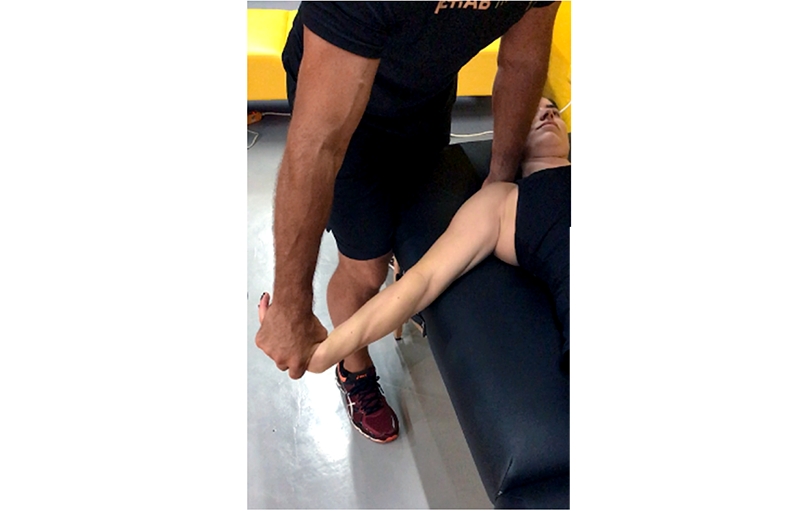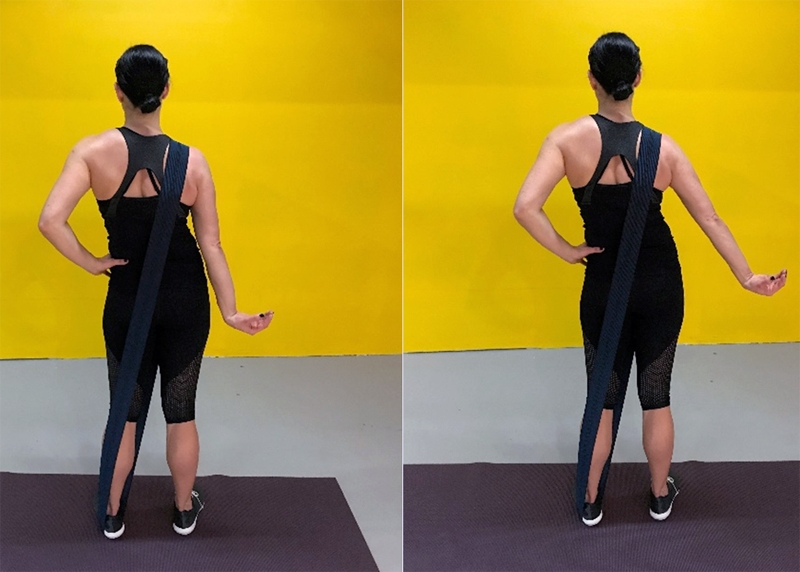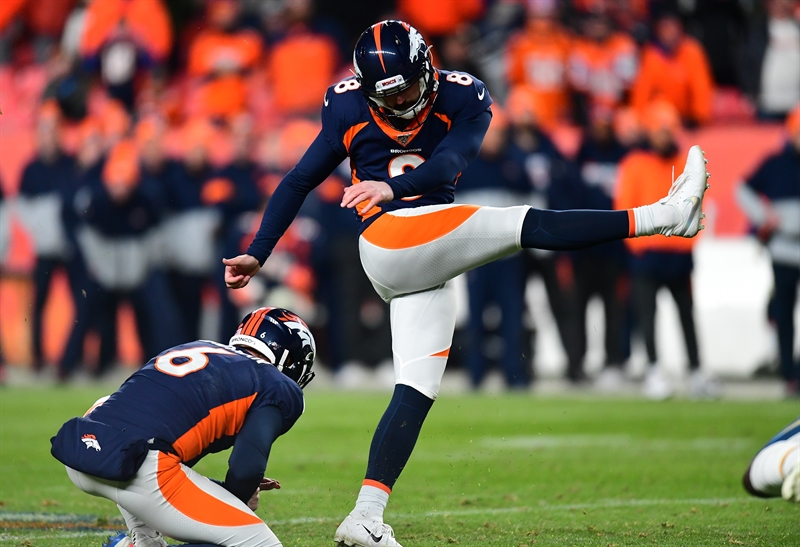You are viewing 1 of your 1 free articles
Neuro-dynamics: Mobilizing the Athlete Back to Full Function and PIN Treatment
Chris Mallac explores the current understanding of nerve mobility and the implications for clinicians treating athletes in their care.
Dec 1, 2019; Denver Broncos kicker Brandon McManus (8) kicks the game-winning field goal. Credit: Ron Chenoy-USA TODAY Sports
David Butler and Michael Shacklock coined the terms neuro-dynamics or neuro-mobilizations to describe the concept that impaired neural movement can cause limitations in the range of motion in the body(1-3). Subsequent research has supported the hypothesis that pain-free movement requires nerve tissue to elongate, compress, and glide within the nerve tract or bed(4,5).
Nerve mechanics
When the body moves (such as touching the toes or throwing a ball), several actions occur:
- Joints rotate and hinge.
- Joint capsules and ligaments expand.
- Muscles stretch.
- Fascia moves.
- Nerves slide, tension and compress against interfaces, and also elongate to their full length (NB nerves don’t stretch per se - they extend based on the position of the body).
As the joints move, nerves also move. They typically migrate closer to the joint if elongated, or further away from the joint when placed on slack. Adverse neural stress from blocked movement can result in nerve pain and limited motion. Often this manifests as reflexive muscle guarding with limited range of motion in an attempt to protect the nerve from further irritation(5). Typical modes of interference with nerve mobility include squeezing by a protruding spinal disc, compression in a narrow fibro-osseous tunnel, restriction caused by fibrotic tissue that adheres to the outside of the nerve, or bony protuberances which block an adjacent nerve that repeatedly passes by it. Immobilization by casting or bracing causes shortening of the nerve and thus structural changes that can also limit movement; conversely, traction injuries due to excessive ranges of motion may stretch the nerve beyond its typical ability to elongate and result in possible motor impairment (see figures 1-2).
Some common injuries and the associated manifestation of a limited nervous system movement component are:
- High hamstring tendinopathy, which creates scar tissue that adheres to the sciatic nerve may manifest as a deep hamstring ache when stretching(6).
- A disc bulge in the cervical spine may irritate the C5/6 nerve root, and the athlete may feel an ache into their thumb. Brachial plexus injuries are the most common type of neck injury seen in rugby union players(7).
- A clavicle fracture that heals with a callus and grabs the ulnar nerve(8). The consequence may be neurological signs in the distribution of the ulnar nerve.
- Piriformis syndrome that compresses the sciatic nerve and causes a posterior ache into the back of the thigh(9).
- An unstable shoulder that creates compression against the C8/T1 median nerve root at the shoulder(10). The thrower feels a ‘zing’ down the arm into the fingers each time they throw a ball or other implement such as a javelin.
- Compartment syndrome in the deep posterior compartment of the thigh that irritates the tibial nerve, presenting as a ‘woody’ feeling into the ankle and foot(11).
- A compressed tarsal tunnel, which irritates the lateral and medial plantar nerve and gives the runner ‘plantar fascia’ type pain(12).
- Anterior thigh pain in a kicking athlete due to interface problems with the femoral nerve(13).
- Ulnar nerve problems due to ulnar collateral ligament strain in the overhead athlete(14).

Figure 1: Javelin thrower requiring a significant range of motion and extensibility in the brachial plexus. REUTERS/Kai Pfaffenbac

Figure 2: Karate athlete needing extensive sciatic/tibial nerve mobility.
The Neuro-dynamic Assessment
Performing nerve-tensioning tests helps determine if the symptoms have a neurogenic component. Synchronized movements elongate the nerves and compress nerve roots or peripheral nerves to try to reproduce the patient’s complaints. Pain, pulling, and stretching sensations are all significant findings.
The upper-limb tension tests (ULTTs) focus on the movement of the nerves from the spine that form the brachial plexus. These tests were first described by Robert Elvey - and are, hence, also known as Elvey tests - but are most commonly called ULTTs(16). Place the shoulder, elbow, forearm, wrist, and fingers in a specific position to put stress on a particular nerve (nerve bias). Then, move individual joints or the cervical spine as sensitizers and observe how they improve or worsen the complaints.
Lower limb neurodynamic assessments evaluate the mobility of the spinal nerves that form the sciatic and femoral nerves, which then branch out to the lower limb. These include the straight-leg raise test, slump test (see figure 4), and femoral-nerve test.
A neuro-dynamic assessment is positive if it meets the following three criteria(15):
- It reproduces the offending pain or sensation.
- It feels different than the uninvolved side.
- It is better or worse using a sensitizer. For example, during the SLUMP or straight leg raise test, hamstring pain decreases and worsens with dorsiflexion.
Other things to keep in mind include(2,3):
- The pain may be radicular if the result of nerve root compression or somatic, which localizes as a result of a movement or stimulus.
- If not pain, there may be a sensation of a deep ache or constant tightness in an area.
- The aches and pains usually occur along the distribution of the nerve.
- Symptoms do not typically fit the classic manifestation of the particular mechanism of injury.
- May have associated tingling and numbness, but this is not common unless there is definitive nerve root impingement.
- Movement of the limb usually feels ‘different’ and restricted compared to the other side.

Figure 4: The Slump Test: www.chronicconditions.co.uk/opinion/details/slump-test-neglected-examination-technique-sciatica-primary-care
Neuro-dynamic Rehabilitation
If a neuro-dynamic assessment detects restrictions, mobilize the nervous tissue with a procedure known as nerve flossing. Nerve flossing (also known as nerve mobilization) is a specialized way of easing neural tension in different parts of the body(2).
The physiological goals of nerve flossing are as follows:
- Prevent adhesions between the nerve and interface (muscle, joint, fascia, bone).
- Improve the circulation through the nerve tissue.
- Increase ‘axonal’ flow through the nerve tissue.
- To ‘milk’ the nerve - to disperse inflammatory exudate.
- To place the nerve in positions of maximum elongation.
There are, however, some contraindications to nerve flossing:
- Recent or worsening neurological signs such as pins and needles, numbness, and unexplained weakness.
- Cauda equina syndrome.
- A recent spinal injury, such as disc prolapse or bone damage.
- Severe pain in the limb that would most likely be provoked by a nerve test or nerve mobilization technique.
Nerve Sliders vs. Tensioners
What is the difference between a slider and a tensioner movement?
- A slider is designed to produce a sliding nerve motion without maximum tension or elongation. Slide the nerve by alternating at least two joint movements. Increasing the stress or tension at one joint while creating slack on the nerve at the other joint allows the nerve to move while keeping the net mechanical tension the same. This method is thought to produce a larger longitudinal excursion than techniques that elongate the entire nerve bed, such as tensioning techniques.
- A tensioner is a technique used to increase the tension in neural structures. This method extends the nerve fully along the nerve bed.
Application to Treatment of the Posterior Interosseous Nerve
To accurately assess the radial nerve and the posterior interosseous nerve (PIN), place stress on the nerve by positioning the limb in the following order (see figure 5):
- Shoulder girdle depression
- Elbow extension
- Medial rotation of the whole arm
- Wrist, finger and thumb flexion
- Arm abduction
- Use cervical side flexion as a sensitizer

Figure 5: Radial nerve tension test

Figure 6: Radial nerve slider
A stretch band is used around the shoulder to cause scapular depression. Hold the wrist in flexion, the elbow in extension, and internally rotate the shoulder. Raise the arm into shoulder abduction. Flex the cervical spine laterally to the opposite side to achieve a maximum elongation position and, thus, a tensioner. Athletes can perform this maneuver as part of their home exercise program.
Conclusion
Signs of adverse neural tension are frequently seen in athletes and may contribute to ongoing pain and loss of function. Common neural mobility tests such as the straight leg raise test, slump test, femoral nerve test, and upper limb brachial plexus tests are used for assessment. They may also form the basis of treatment for neural mobility disorders. Nerve flossing techniques such as sliders and tensioners are the mainstream methods for improving neural mobility and restoring full function.
References
- Butler D (2001) Mobilization of the Nervous System. Churchill Livingstone
- Shacklock M (2005) Clinical Neurodynamics: a new system of musculoskeletal treatment, Elsevier, Oxford, UK
- 1995; 81; 9-16
- Manual Therapy. 2008;13, 213–221
- Journal of Manipulative and Physiological Therapeutics. 2003. 26(2). 99-106
- Am J Sports Med.2009; 37(4):727-34
- Chiropractic & Osteopathy 2010, 18:18
- Muscle Nerve. 2017; 56(4):663–73
- J Clin Imaging Sci. 2018; 8: 6
- GNeurosurgical Review doi.org/10.1007/s10143-018-1001-x
- Curr Rev Musculoskelet Med. 2010; 3(1-4): 32–37
- Foot Ankle Int.2002; 23(3):208-11
- Int J Sports Phys Ther. 2017; 12(7): 1163–1173
- World J Orthop. 2016; 7(10): 650–656
- Journal of Orthopaedic & Sports Physical Therapy. 2012; 42(5), 413–424
- Journal of Hand Therapy. 1997; 10(2):122-9
Newsletter Sign Up
Subscriber Testimonials
Dr. Alexandra Fandetti-Robin, Back & Body Chiropractic
Elspeth Cowell MSCh DpodM SRCh HCPC reg
William Hunter, Nuffield Health
Newsletter Sign Up
Coaches Testimonials
Dr. Alexandra Fandetti-Robin, Back & Body Chiropractic
Elspeth Cowell MSCh DpodM SRCh HCPC reg
William Hunter, Nuffield Health
Be at the leading edge of sports injury management
Our international team of qualified experts (see above) spend hours poring over scores of technical journals and medical papers that even the most interested professionals don't have time to read.
For 17 years, we've helped hard-working physiotherapists and sports professionals like you, overwhelmed by the vast amount of new research, bring science to their treatment. Sports Injury Bulletin is the ideal resource for practitioners too busy to cull through all the monthly journals to find meaningful and applicable studies.
*includes 3 coaching manuals
Get Inspired
All the latest techniques and approaches
Sports Injury Bulletin brings together a worldwide panel of experts – including physiotherapists, doctors, researchers and sports scientists. Together we deliver everything you need to help your clients avoid – or recover as quickly as possible from – injuries.
We strip away the scientific jargon and deliver you easy-to-follow training exercises, nutrition tips, psychological strategies and recovery programmes and exercises in plain English.











